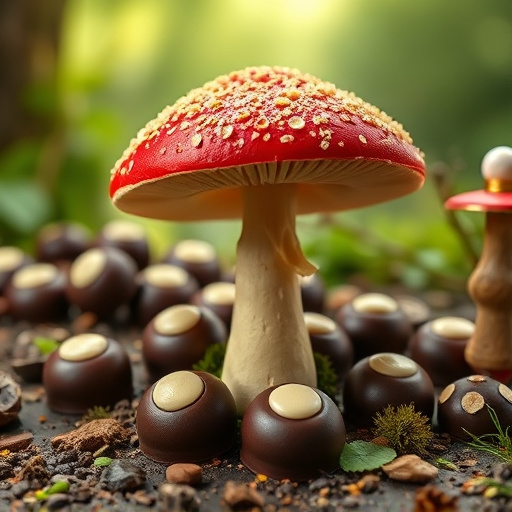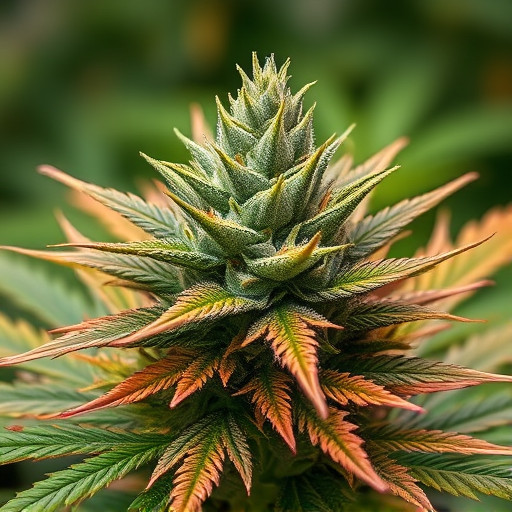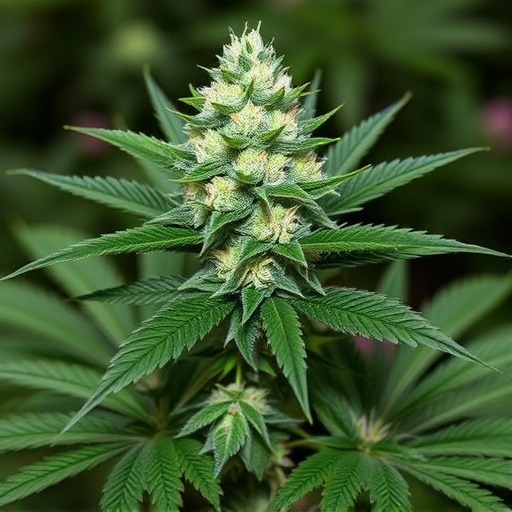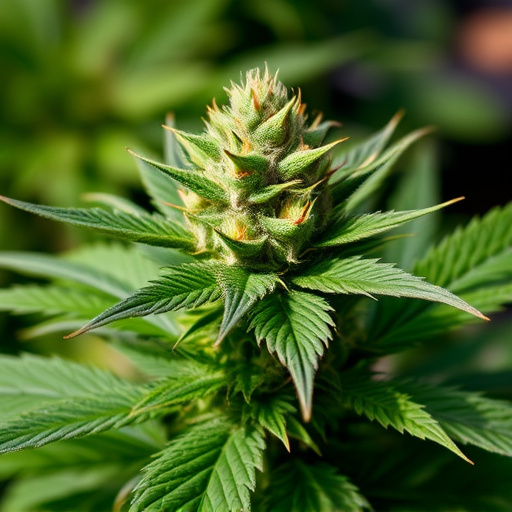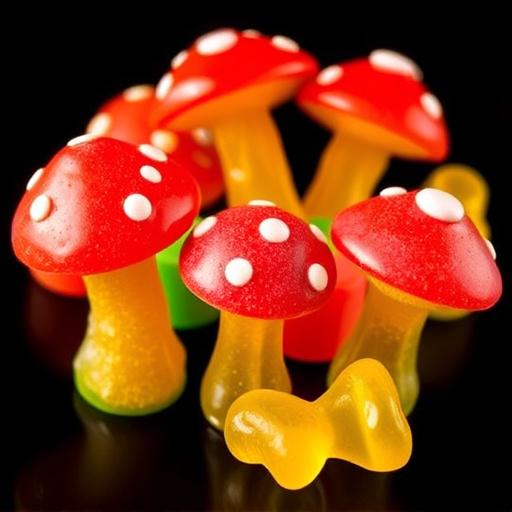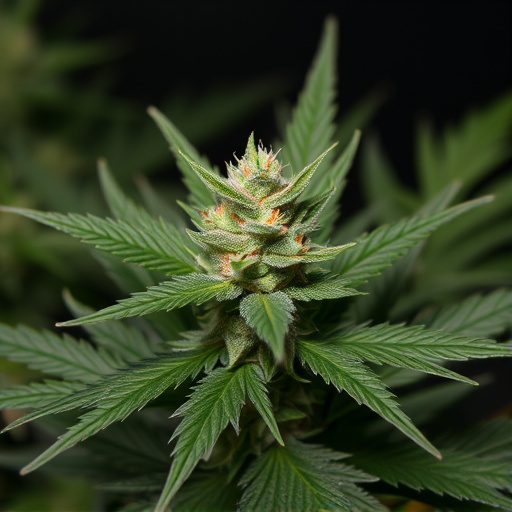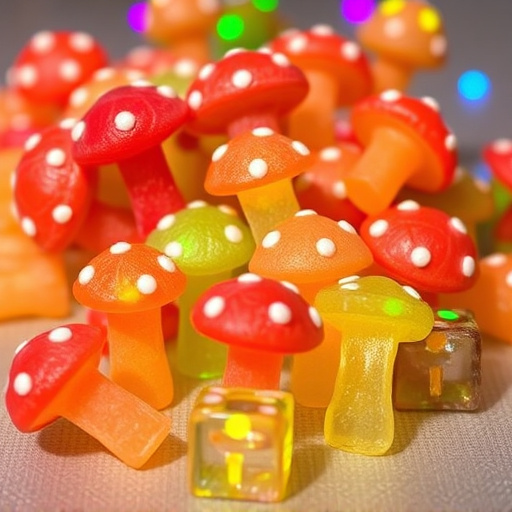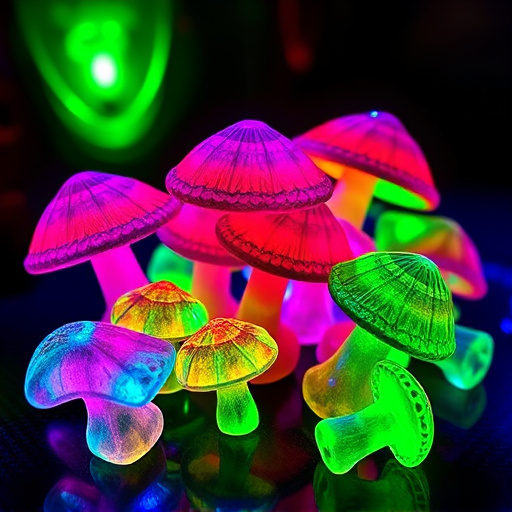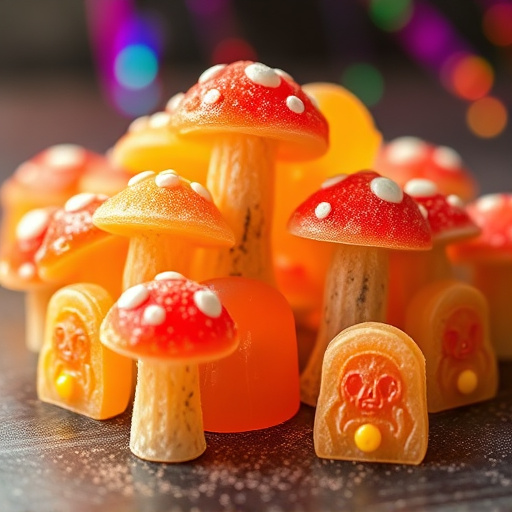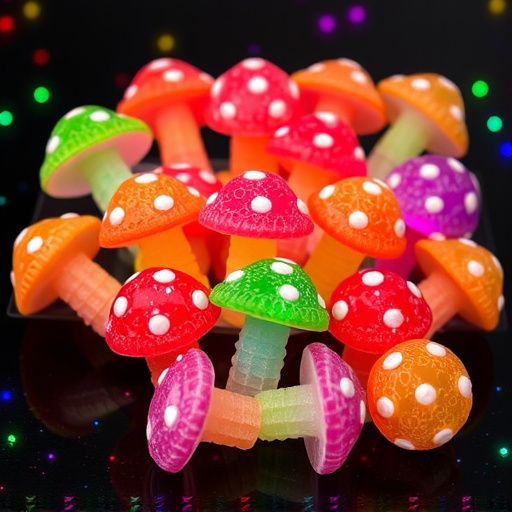The history of magic mushroom gummies usage is intrinsically linked to psychedelic culture in the 1960s, gaining popularity as therapeutic research grew. Commercialization began in the early 2000s with innovative flavored gummies, transforming from underground treats to mainstream products. Today, these gummies reflect changing attitudes, offering diverse flavors like fruity and citrusy options, appealing to new users and those seeking therapeutic effects. The recent surge in popularity underscores broader cultural shifts towards psychedelic acceptance and holistic wellness, driving the development of unique flavor combinations.
The history of magic mushroom gummies usage dates back to ancient times, with traditional cultures using psilocybin-rich mushrooms for their medicinal and spiritual properties. However, it wasn’t until recent decades that these natural remedies gained mainstream attention, evolving into the popular, legal, and flavorful gummies we know today. This shift in demand is driven by a desire for alternative wellness solutions, leading to an exploration of diverse flavors that cater to both the curious and the connoisseur. Let’s delve into the evolution, rise in popularity, and top flavors shaping the current landscape of magic mushroom gummies.
- Evolution of Magic Mushroom Gummies: A Historical Perspective
- Unpopular to Popular: The Rise in Demand for Flavored Gummies
- Exploring the Top Magic Mushroom Gummies Flavors Today
Evolution of Magic Mushroom Gummies: A Historical Perspective
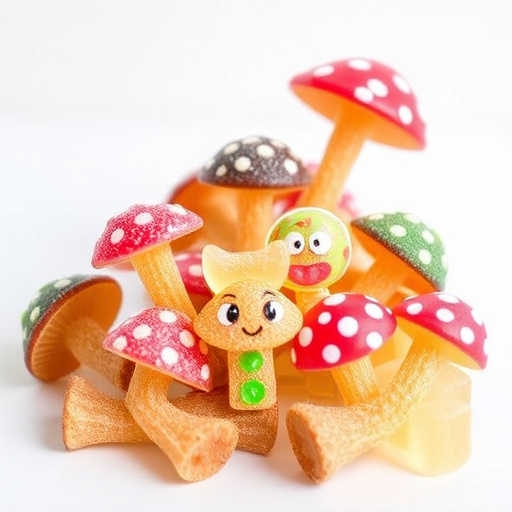
The history of magic mushroom gummies is intertwined with the evolution of psychedelic research and cultural shifts over the decades. In the 1960s, when psychedelic mushrooms gained prominence in counterculture movements, their use was largely informal and underground. As society’s relationship with psychedelics began to change in the late 20th century, so too did their commercialization. The early 2000s saw a rise in the production of edible psychedelics, including gummies, as research into their therapeutic potential grew. This shift not only normalized psychedelic consumption but also introduced them to a wider audience through innovative candy-like forms like gummies.
Over time, magic mushroom gummies have evolved from experimental treats to mainstream products. They offer a discreet and palatable way to experience the effects of psilocybin, making them appealing for both recreational users and those exploring their therapeutic benefits. The growing acceptance and accessibility of these edibles reflect broader cultural changes surrounding psychedelics, marking a significant departure from their countercultural roots in the 1960s.
Unpopular to Popular: The Rise in Demand for Flavored Gummies
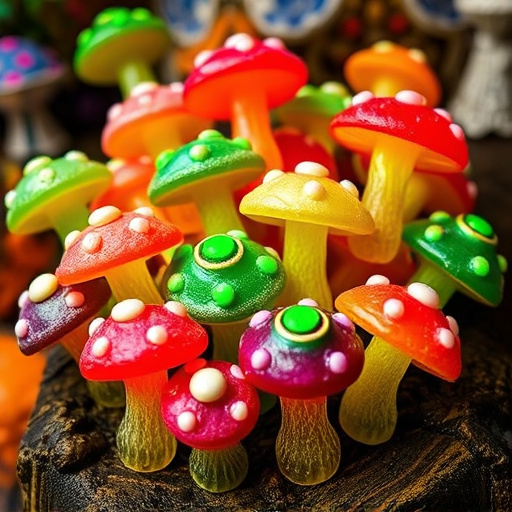
In years past, magic mushroom gummies were predominantly associated with their traditional earthy or pungent flavors reflecting the natural essence of the mushrooms. However, as usage and acceptance have evolved, there’s been a striking shift towards flavored varieties. The history of magic mushroom gummies is marked by a sense of secrecy and subterfuge, but today, these treats are increasingly finding their place in the mainstream market due to changing attitudes and rising demand for variety.
The rise in popularity of flavored magic mushroom gummies can be attributed to several factors. For one, they offer a more palatable experience for those new to psychedelic substances, making it easier to consume and control the dose. Moreover, flavors like fruity, citrusy, or sweet options make these edibles more appealing and accessible, breaking down barriers that once surrounded their use. This trend reflects a broader cultural movement towards incorporating psychedelics into wellness routines, with flavored gummies serving as an attractive entry point for curious consumers.
Exploring the Top Magic Mushroom Gummies Flavors Today
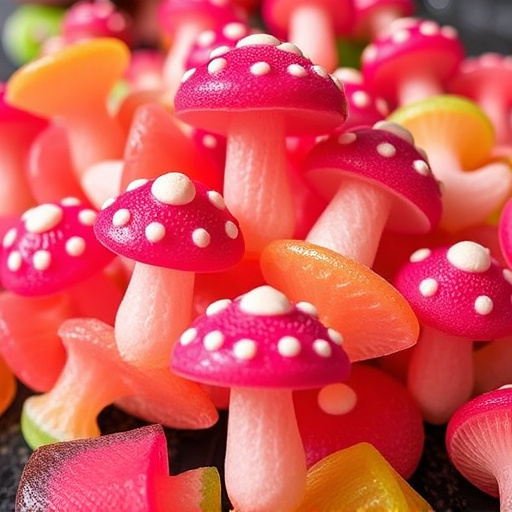
In today’s world, the history of magic mushroom gummies usage has evolved significantly. What once was a niche interest in psychedelic exploration is now a thriving industry with a wide array of flavors catering to diverse tastes. From traditional fruit-based options like strawberry and blueberry to more exotic choices like mango and passionfruit, these gummies offer an accessible and discrete way to experience the effects of psilocybin mushrooms.
The popularity of magic mushroom gummies has skyrocketed, driven by changing cultural attitudes and growing acceptance in certain regions. As a result, manufacturers have become increasingly creative with their flavor profiles, incorporating unique combinations and innovative ingredients to stand out in the market. This trend reflects a broader shift towards holistic well-being and alternative therapeutic approaches, where psychedelic-assisted therapy is gaining recognition for its potential mental health benefits.
The evolution of magic mushroom gummies reflects a significant shift in consumer preferences and a growing acceptance of psychedelic-inspired treats. From their historical roots as medicinal aids to their modern emergence as popular, flavored snacks, these gummies have captivated the senses of folks worldwide. As interest in psychedelic exploration continues to rise, understanding the history and current trends in magic mushroom gummies usage is essential for both consumers and industry professionals alike, ensuring a responsible and enjoyable experience for all.
